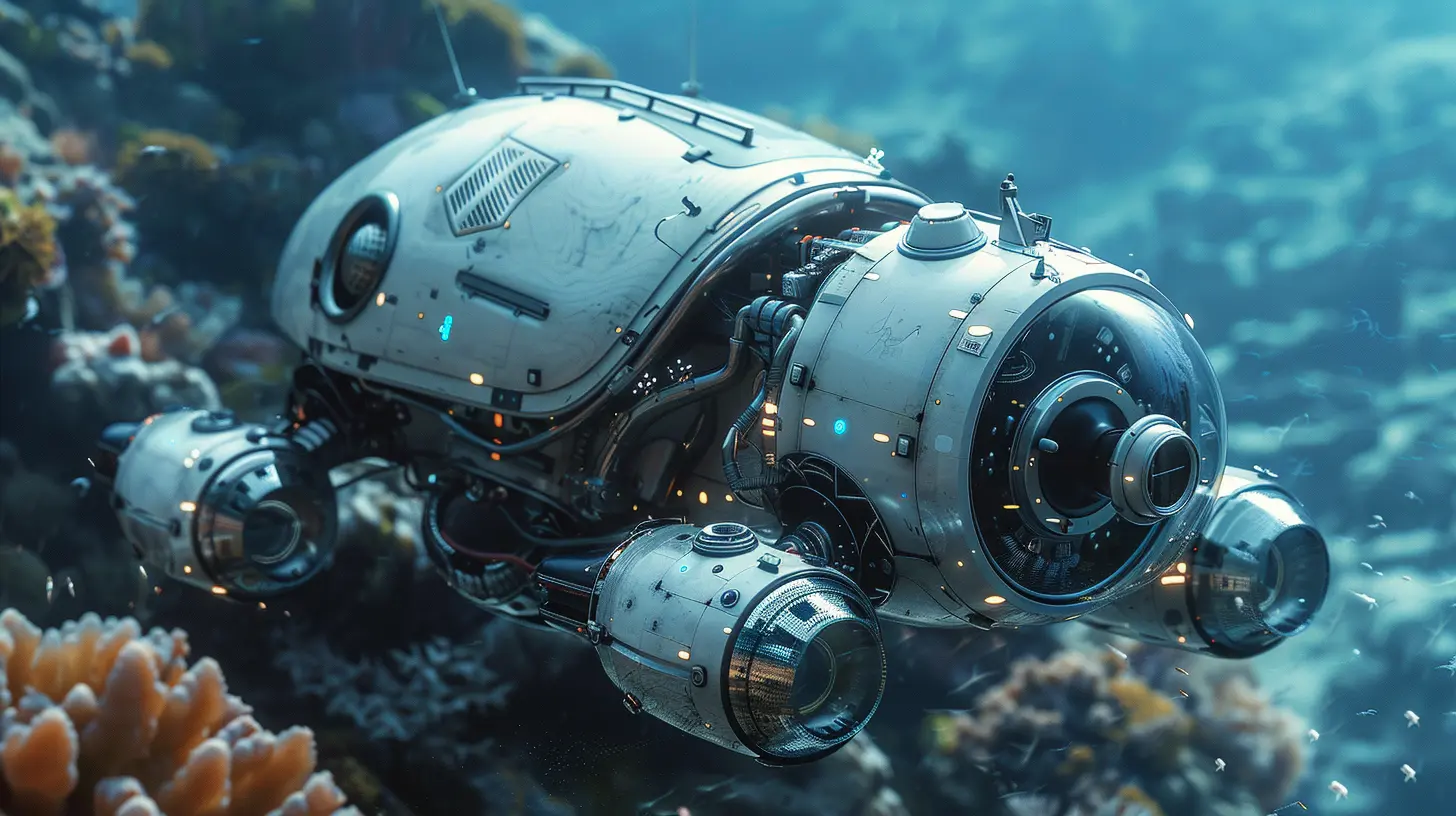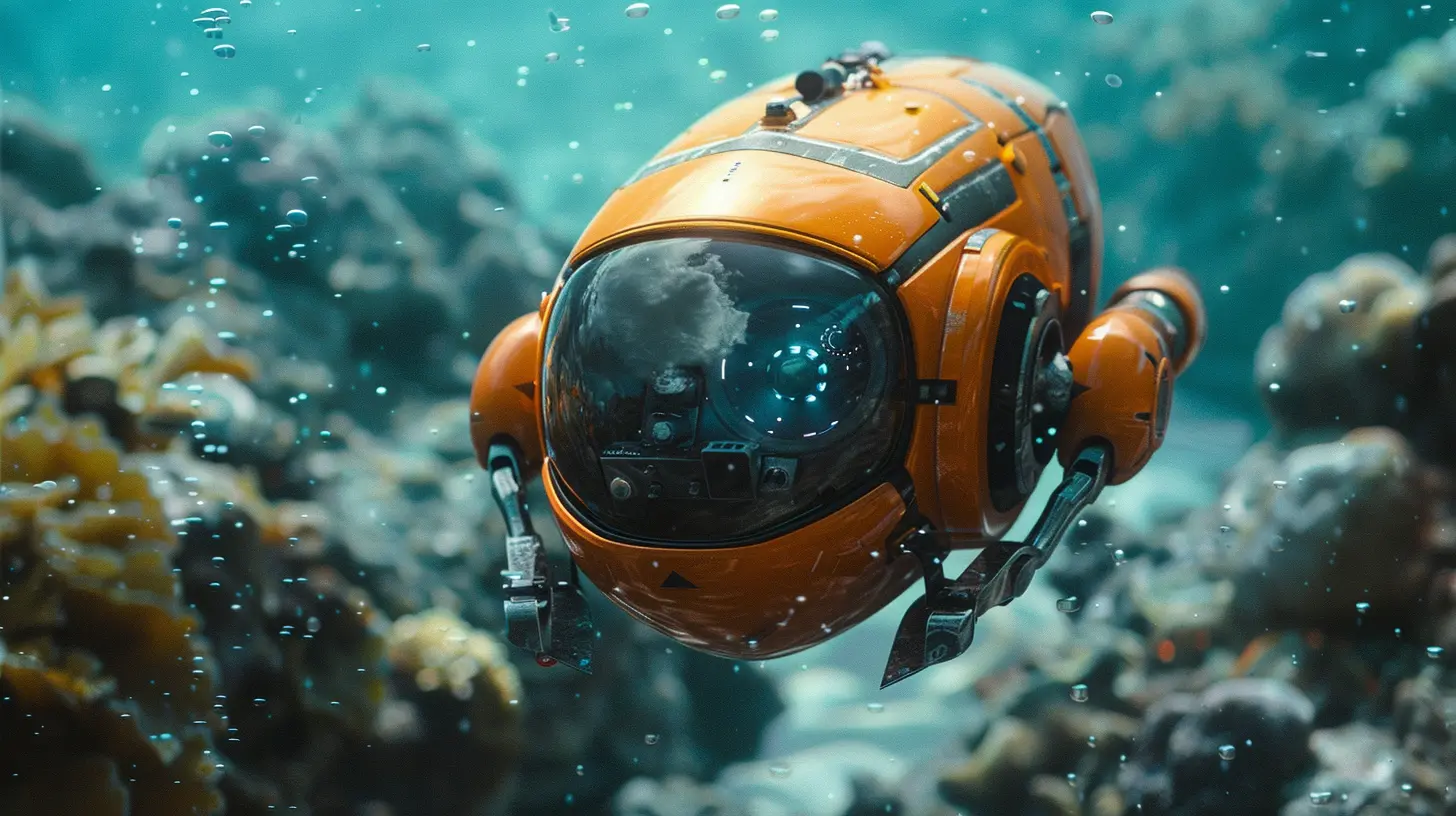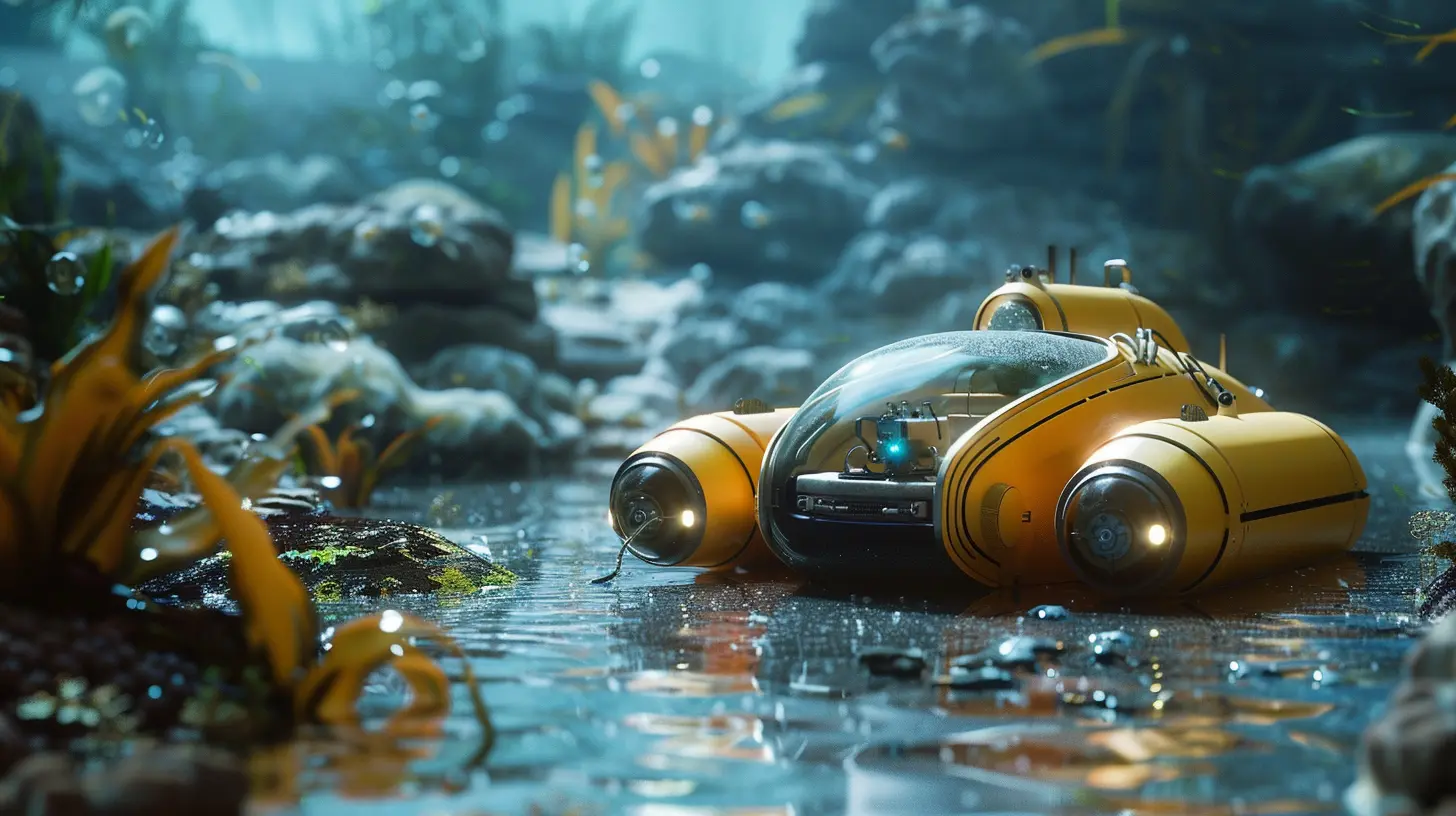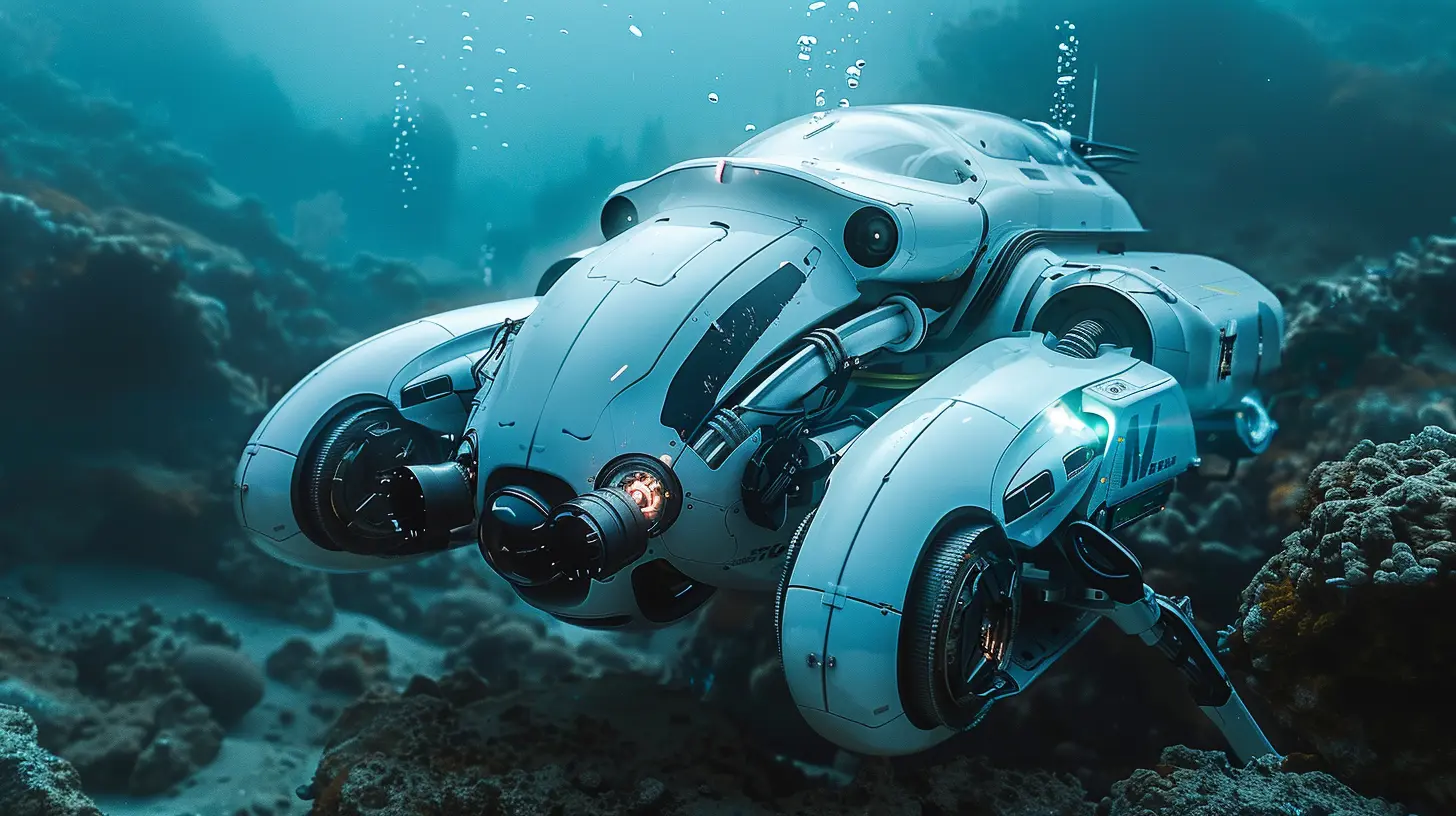Exploring the Potential of Underwater Robotics
24 May 2025
Underwater robotics is revolutionizing the way we interact with oceans, lakes, and other water bodies. These sophisticated machines help us explore the hidden depths, conduct research, and perform tasks that would otherwise be impossible or extremely dangerous for humans.
From deep-sea exploration to military surveillance and environmental monitoring, the potential of underwater robots is massive. But how exactly are these machines changing the game? Let’s dive in!

What Are Underwater Robots?
Underwater robots, also known as Autonomous Underwater Vehicles (AUVs) and Remotely Operated Vehicles (ROVs), are machines designed to operate beneath the water’s surface. Unlike submarines that require human operators inside, these robots can be remotely controlled or function autonomously.These robots are used for a variety of purposes, from mapping the ocean floor to repairing underwater pipelines. Thanks to advancements in AI, sensors, and robotics, they are becoming more capable than ever.

How Do Underwater Robots Work?
The functionality of underwater robots depends on their design and purpose. Some of them are tethered to a control station via cables, while others operate wirelessly. Here’s a breakdown of how they work:- Sensors: They use sonar, cameras, and pressure sensors to navigate and collect data.
- Propulsion Systems: Thrusters or propellers help them move in different directions.
- AI & Machine Learning: Modern underwater robots use AI to analyze surroundings and make real-time decisions.
- Remote Operation: Many robots can be controlled from above the water using a joystick or computer interface.

Applications of Underwater Robotics
1. Deep-Sea Exploration
The ocean is the final frontier on Earth, with vast regions still unexplored. Traditional diving techniques only allow humans to go so deep, but underwater robots have no such limitations. They can withstand extreme pressures, making deep-sea exploration possible.ROVs like the Deep Discoverer and Victor 6000 have provided never-before-seen footage of deep-sea creatures and underwater volcanoes. These discoveries help scientists understand our planet’s biodiversity and geology.
2. Marine Research & Conservation
Underwater robots play a huge role in marine conservation. They help track marine life, observe coral reef health, and even monitor pollution levels.For example, robots equipped with sensors can detect oil spills, allowing for quicker responses and minimizing environmental damage. Some robots are even designed to remove invasive species like the crown-of-thorns starfish, which threatens coral reefs.
3. Military & Defense
Military forces worldwide are using underwater robotics for surveillance, mine detection, and even submarine tracking. These robots can scout enemy waters, detect underwater mines, and assist in search-and-rescue operations.Drones like the REMUS 600 are used by the U.S. Navy for reconnaissance missions. Their ability to operate autonomously makes them invaluable in high-risk situations.
4. Oil & Gas Industry
Offshore oil drilling requires regular inspection and maintenance of underwater pipelines and rigs. Sending human divers into deep waters is expensive and dangerous. This is where underwater robots come in.ROVs equipped with high-resolution cameras and robotic arms can inspect, repair, and even construct underwater structures, making operations safer and more efficient.
5. Underwater Archaeology
Shipwrecks and ancient submerged ruins hold pieces of history that are challenging to explore. Underwater robots provide archaeologists with a non-invasive way to study these sites.One of the most famous discoveries made using underwater robotics was the exploration of the Antikythera shipwreck, which revealed ancient Greek artifacts and one of the oldest analog computers ever found.
6. Search and Rescue Operations
Underwater accidents and disasters, such as plane crashes in oceans or people getting trapped in submerged vehicles, require quick response times. Underwater robots assist in these missions by locating survivors, retrieving wreckage, and surveying the scene without risking human lives.The BlueROV2 is an excellent example of a robot that has been used in search and rescue missions to locate drowning victims or lost objects underwater.

Advantages of Underwater Robotics
So why are these robots becoming so popular? Here are some of their key benefits:✅ Safety: They eliminate risks associated with deep diving and underwater missions.
✅ Efficiency: Robots can work for hours without fatigue, collecting high-quality data.
✅ Cost-Effective: Reducing the need for divers cuts down operational costs.
✅ Accessibility: They can reach extreme environments that are otherwise inaccessible.
Challenges in Underwater Robotics
Of course, underwater robotics isn’t without its challenges. Here are some hurdles developers and engineers face:- Communication Issues: Water is a poor medium for transmitting wireless signals, making real-time control difficult.
- Energy Limitations: Battery life is a significant concern since recharging in deep-sea environments is tricky.
- Navigation Difficulties: GPS doesn’t work underwater, so robots rely on complex acoustic and inertial navigation systems.
- Extreme Conditions: High pressure, low temperatures, and lack of light make deep-sea robotics challenging.
Despite these challenges, ongoing advancements in AI, battery technology, and sensor development are making underwater robots smarter and more capable.
The Future of Underwater Robotics
The future of underwater robotics is nothing short of exciting. Here’s what we can expect in the coming years:🔹 AI-Powered Autonomous Robots: Smart AUVs will carry out missions with minimal human intervention.
🔹 Improved Energy Solutions: Advances in battery technology could allow robots to operate for weeks or even months without recharging.
🔹 Swarm Robotics: Multiple underwater robots working together could revolutionize exploration and data collection.
🔹 Bio-Inspired Designs: Future robots may mimic marine animals like squids or fish, making them more efficient in underwater environments.
Organizations like NASA and private companies are even exploring the idea of using underwater robots to explore alien oceans, such as Europa’s (one of Jupiter’s moons) icy waters. Who knows? The next big discovery might not just be on Earth but beyond!
Conclusion
Underwater robotics is transforming the way we explore, research, and interact with the underwater world. From deep-sea exploration to environmental monitoring, these machines are proving to be powerful tools across multiple industries.While challenges remain, rapid advancements in technology will continue to push the limits of what underwater robots can achieve. One thing is for sure—our understanding of the deep blue is only getting better, thanks to these incredible machines.
all images in this post were generated using AI tools
Category:
RoboticsAuthor:

Michael Robinson
Discussion
rate this article
4 comments
Niva Lee
Who needs fish when robots can dive better?
June 7, 2025 at 12:02 PM

Michael Robinson
While robots enhance exploration and research capabilities, they can't replace the ecological significance and beauty of fish in aquatic ecosystems.
Aaron Roberson
Underwater robotics hold immense promise for exploration, conservation, and environmental monitoring. Exciting advancements ahead!
June 3, 2025 at 10:22 AM

Michael Robinson
Thank you! I'm glad you’re excited about the potential of underwater robotics. They truly are game-changers for our understanding and protection of marine environments!
Dulce McCarthy
Fascinating insights, thank you!
May 27, 2025 at 4:43 AM

Michael Robinson
Thank you! I'm glad you found it interesting!
Oren McClintock
Exciting advancements in underwater exploration!
May 25, 2025 at 3:30 AM

Michael Robinson
Thank you! I’m glad you find the advancements exciting—underwater robotics truly opens up new frontiers for exploration!



